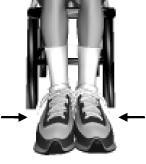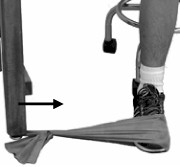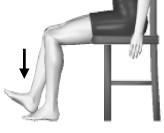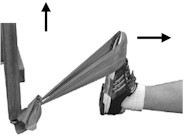Stanford Who’s Who Press Release September 27, 2012
JTT Junior Team Tennis at Lake Lynn. Sign up for one of the 3 teams. 10 U,12 U, and 14 U silver teams.
We need 8 players per team, 3 young men and 3 young women, to qualify for States next spring. If you know of any players that want to play let them know about this site. Click on the links below to sign-up this is the site for the USTA team registration $16. Then under each section is the registration for the city coaches. You must also be a USTA member Click here to renew or to become a member $20 Junors. Total cost to play in the league is $90 for a Raleigh resident and $102 for non-res . We will also help anyone come up to level in our tournament team work outs.
|
7039230928 |
03/08/2014 |
||||
Click here to register for the 14 and under 7039230928
14 under City Coaching registration Res $90.00 / Non-res $102.00
|
7039230929 |
03/08/2014 |
||||
Click here to register for the 12 and under 7039230929
12 under City practice registration Res $90.00 / Non-res $102.00
|
7039230930 |
03/08/2014 |
||||
Click here to register for the 10 and under 7039230930
10 under City practice registration Res $90.00 / Non-res $102.00
7 Don’ts After a Meal
* Don’t smoke anytime
-Experiment from experts proves that smoking a cigarette after a meal is comparable to smoking 10 cigarettes (chances of cancer is higher).
* Don’t eat fruits immediately
– Immediately eating fruits after meals will cause stomach to be bloated with air. Therefore take fruit 1-2 hr after meal or 1 hr before meal.
* Don’t drink tea –
Because tea leaves contain a high content of acid. This substance will cause the Protein content in the food we consume to be hardened thus difficult to digest.
* Don’t loosen your belt – Loosening the belt after a meal will easily cause the intestine to be twisted &blocked.
* Don’t bathe – Bathing will cause the increase of blood flow to the hands, legs & body thus the amount of blood around the stomach will therefore decrease. This will weaken the digestive system in our stomach.
* Don’t walk about
– People always say that after a meal walk a hundred steps and you will live till 99. In actual fact this is not true. Walking will cause the digestive system to be unable to absorb the nutrition from the food we intake.
* Don’t sleep immediately – The food we intake will not be able to digest properly. Thus will lead to gastric & infection in our intestine.
Better Nutrition for Better Health
May, 2003
5Pillars.com
We all know that healthy eating should be an everyday part of our lives, but sometimes we don’t understand enough about nutrition to make the best decisions. We tend to go overboard once we decide its time to lose weight, making drastic changes that we can’t stick to rather than thinking of how we can best eat for a lifetime.
To be "on a diet" implies eating a certain way just long enough for a person to reach his or her weight loss goal. Once done, the person then goes "off the diet", returning to old eating habits that put the weight on in the first place.
Dieting, as it is commonly understood, is primarily about weight loss and food restriction, not about replacing one food for another to improve health. For most of us, “dieting” can only be sustained for a short time, not because we don’t have the discipline or desire, but because we do not understand that there is a better way.
Ideally, we would get all the nutrients we need from our food, but the modern diet of increasingly processed foods leaves most of us lacking in basic nutrients. Supplementation–with well-researched, high-quality products like any of Nikken’s
Bio-Directed Nutritionals–is the only way to ensure that your body has all the resources it needs to function optimally.
Once you’re certain you’ve gotten the basics covered, it’s time to start changing how you eat. From now on, whenever you shop, prepare, or consume a particular food think healthy, not weight gain or loss. Choose foods that will help you achieve success with positive goals, whatever they may be. You may be looking for greater stamina and power for your workouts, you may have decided to eat for a healthier heart, or you may simply want to improve your energy levels so that you don’t feel tired all the time. Eating for health does not involve stress, frustration or counting the days until you can have a particular food.
Instead, it gives you such a noticeable difference in the way you look and feel that you become motivated to continue. The beauty of healthy foods is that they are naturally low in calories, low in sugar, low in saturated fat and low in sodium, making each and every one an excellent choice. Many healthy foods like fruits, vegetables and whole grains also contain fiber.
Fiber foods not only fill you up, but they satisfy your hunger for long periods of time, helping you to reach your weight loss goals safely and naturally. A big plus is that healthy, nutrient dense foods are difficult to overeat, which means that portion sizes are rarely an issue. Most unhealthy processed foods on the other hand do not fill you up, and are rarely ever packaged so that you eat a single serving. For example, it is easy to consume a bagful of potato chips, but how many baked potatoes can you eat at a sitting? If given the opportunity to consume as many bananas or apples as you would like, how many could you eat? Probably not many, each is packed with healthy nutrients and fiber, yet low in calories.
There are so many healthy food choices available that it is impossible to list them all, but here are just a few suggestions to get you started:
Strawberries: Just one cup of strawberries provides over 125% of the recommended dietary allowance of vitamin C. Vitamin C helps prevent the tiny capillaries beneath the skin’s surface from breaking and promotes healing of wounds. Strawberries are critical to the formation of collagen, a key element of the connective tissue that keeps skin firm. They are also rich in potassium, and give you iron and fiber as well. All of this and only 45 calories per cup!
Chicken and turkey: Every time you eat these lean meats you get a complete array of amino acids, the building blocks of protein, to promote growth of muscle tissue and new skin cells. These lean meats also have niacin, an important B vitamin that helps all cells obtain the energy they need to stay healthy. One 3 ounce serving of skinless chicken has approximately 150 calories and provides half your daily need for niacin.
Tomatoes: Just one medium size tomato delivers almost one half of the RDA for vitamins A and C, along with some niacin and fiber, for only 30 calories.
Oatmeal: Many processed cereals are high in sugar and high in calories, and leave you feeling hungry, while oatmeal is low in calories, has no sugar, and is a great natural energy food. One reason that oatmeal is so filling is that it contains two kinds of fiber, insoluble and soluble. Insoluble fiber keeps you regular and soluble fiber helps keep your blood-sugar levels stable.
Yogurt: One cup of low-fat yogurt gives you plenty of protein, zinc, folacin, B12 for healthy blood and skin tone, and riboflavin, important for providing energy to skin cells.
Broccoli: One large cooked stalk has 1 1/2 times your daily need for vitamin C, 50% of your RDA for vitamin A, and also has B vitamins, iron, calcium and fiber, all for just 26 calories! Tip: Excess heat can destroy some of these important nutrients, so be sure not to overcook broccoli..
A word on fats: Americans are overconsuming saturated fats, but are not getting nearly enough of a very important and essential fat known as Omega 3.
Eating foods rich in Omega-3 fatty acids can help prevent heart disease, diabetes, and have a beneficial effect on cholesterol levels, high blood pressure, stroke, and inflammatory skin conditions. Whole grains, seeds, nuts, leafy green vegetables and deep-water-fish such as salmon and tuna contain omega 3 fatty acids.
c. 5Pillars.com, 2003
Athlete’s Health Check List
Athlete’s Health Check List
Morning:
- Reflect on past, present, future.
- Lotion on feet, knees, elbows& hands.
- Warm-up stretches.
- Good Breakfast.
- Check Equipment
1 hour to ½ hour before workout:
- Sun Screen.
- Drink 2 glasses of water.
- Power bar and 1 serving of fruit.
After work-out:
- Drink water &/or Gatorade.
- Cool down stretches.
- Hit the showers.
- Reflect on past, present, future.
- Write in journal.
There are a lot of health issues for an Athlete in any sport, but over the years I have found that following this check list will help you have a longer career in your favorite sport.
· Reflect on past, present, future.
This is an area many athletes neglect to work on "the mental game". To reflect means you are looking or seeing a picture a moving picture is better than a still picture but either way a picture is worth a thousand words. Reflecting on the things you have done, how you have reacted in a given situation, how you have changed or even how you want to react in the future helps your mental health. Mental health is very important! It gives you the drive to compete and the ability to keep in balance the struggles of winning and losing. I have found that taking time to reflect on the past, present, and future helps one grow in wisdom and understanding of one’s self as well as see the goals of those before them and the goals they need to set to be successful. This reflection also helps one know where they are coming from, where they are and where they are going. Most athletes when they are starting out have no idea that it takes about 18,000 hours to compete professionally in any endeavor. Take a Lawyer for example they spend 8 hours a day plus or minus for 8 years not including the 4-8 hours a day of internship necessary to have a job when they are finished with school. Most athletes start their training when they are young but they work out what 2 -4 hours after school or on the weekends. That’s only 1020 hours a year by the time they are 18 that’s only 10200 hours. Reflect on your goals, who you are and who you want to be. Stabilize your game improve your mind and your mental game by keeping in balance past, present, and future.
· Lotion on feet, knees, elbows, shoulders & hands.
Lotion on the feet, knees, elbows, shoulders and hands help moisturize the skin but also allows you to massage the joints allowing you to stay younger and more flexible. Check out reflexology to understand how massaging the feet help promote better health throughout the body. Most of our body’s skin water is actually absorbed through the skin by keeping our bodies lubricated and healthy and not dry it allows the cells to absorb the water out of the air required to keep us healthy. Massage is also a great stress reliever. Relieving stress allows the fluids in the body to flow more freely allowing the immune system, and the nutrition system to work better at giving us the energy we need to perform at our peak proficiency. This is great if done regularly by one’s self but even better if done by a professional once in a while.
· Warm-up stretches.
Warm up is done to increase heat throughout the body and to reduce the risk of tearing or straining muscles by increasing their suppleness. A 2 or 3-minute jog, to raise a light sweat before stretching is recommended. Stretching is used to increase flexibility and freedom of movement, to reduce muscle tension and to reduce the risk of muscle and tendon injuries. While stretching, it is important to remember not to bounce, to keep breathing and to only go to the point of tension not pain.
· Good Breakfast.
Nutrition is the start of a strong body. The body as it grows requires basic elements to grow strong (grains especially wheat, fruits and vegetables in the season they are grown and the use of meat sparingly). Calcium, Magnesium kept in proper balance helps prevent cramping of the muscles. Calcium is required to build strong bones and teeth but too much can harden the joints or build up in fractures.
· Check Equipment
The tools of the trade are fundamental to accomplishing your best performance. If your shoes don’t fit or fall apart while performing it could cause an error on your part or even worst an injury. Check equipment means clothes as well the instruments of your sport. Don’t lose a match because of a broken shoestring or a broken racquet string. You should know how to keep your equipment operating at peek efficiency.
· Sun Screen.
The sun cleans and gives life to all things on the Earth. Yet at the same time the sun can drain, destroy, and deplete a body of life if you get too much of it. If you have an outdoor sport or profession, I would advise that you learn at a young age to wear sun screen on a daily bases so as to prevent skin cancer and premature aging.
· Drink 2 glasses of water.
We are made up of 70% to 75 % water. Dehydration is a major factor in the breakdown of the human immune system. Most people don’t get enough fluids in a day. Some doctors suggest that we should drink 8 glasses of water a day. Reality is we should drink 1 oz. of water for every 3 pounds of we weight after we have reached the age of 8. This helps prevent getting too much water and will assure that we get enough. Most of our water is absorbed through the skin or in the foods we eat so it is important that we keep our skin supple and with as few injures as possible. The type of water is very important as well. Nikken sells the best water you can have in your home or on the road.
· Power bar and 1 serving of fruit.
More athletes neglect these 2 items. Some enduring energy to burn while performing is critical to maintaining a strong body. If the body can’t find the energy it needs to work in the blood system then it has to break down muscle and stored fat, but by the time the body has processed these, the competition is usually over. It is also suggested that you eat pasta, a potato or rice the night before any major workout or competition.
· Drink water &/or Gatorade/Propel.
During and after every event you will have lost about 3 cups of water, electrolytes, salts and minerals that the body needs. Gatorade/Propel attempts to replenish these in its drinks. Nikken living water does too.
· Cool down stretches.
Cool Down stretches help to remove muscle waste products, reduce muscle soreness and stiffness, and to enable you to compete again at the same level within a short period of time. You should do 2-3 minute light jog, or brisk walk immediately after your sport and 5-10 minutes of stretching (emphasize the major muscle groups you have used during your sport).
· Hit the showers.
As stated above taking care of the skin is important, a good warm shower after a competition relaxes the muscles, washes off the salts that have been released, which if left on the body too long would dry out the skin cells effecting the immune system and the aging of the skin.
· Reflect on past, present, future.
After a competition it is important to review what has just happened and put it in perspective with the past, present, future. Be thankful for your ability to have spent the time exhibiting your talents and sharing them with someone else. Remember the people you have come in contact with and who has influenced you as well as those whom you may have influenced. This is part of your legacy, a part of your life that was recorded in history only if you keep record of it. Keeping records is an important part of keeping us humble. It will also help us to remember the people that helped us, so that we will find it easier to provide service for others. Giving us a greater value and worth then any single competition we may perform in.
· Write in journal.
A journal helps keep the facts straight. As you go through your professional career you don’t want to be known for the greatest fish stories. It is much better to have the trophy on the wall then the story of the one that got away. Journals are also important for family history. It will help your kids to understand that you were a kid too and that they have same potential as you, to achieve what ever they want to pursue. Journals also come in handy when you become rich and famous to help you remember to be humble because there is always someone better than we are, we just might not have met him or her yet. Records are meant to be broken, but your accomplishments are just you doing a little better from day to day, breaking your own records and continuing to improve your talents so that you can share them to help others. Track your progress and make sure you are on the straight and narrow path that leads to success in everything you choose to be a professional at.
Ankle
Ankle Range of Motion Exercises
Help to build normal ankle motion.
Pullback
| Technique:Sit with your knee straight and hold the foot position as long as possible. Do as frequently as possible.• Flex your foot back toward your body. |
Flexibility (Stretching) Exercises Loosen tight leg muscles. Tightness makes it hard to use stairs, walk, run and jump. Technique: Hold each exercise 20seconds at a gentle stretch. Do not bounce! Frequency: 6-10 repetitions/exercise, 5-7 days per week
Calf Stretch Basic
| Technique:Sit with your knee straight and towel looped around the ball of your foot.• Slowly pull back until you feel your upper calf stretch. |
Calf Stretch Advanced
| Technique:Once you can stand, try stretching with your hands on a wall.• Place the one foot behind the other with your toes pointing forward. • Keep your heels down and back leg straight. • Slowly bend your front knee until you feel the calf stretch in the back leg. |
Heel Stretch Basic
| Technique:Sit with your knee slightly bent. Loop a towel around the ball of your foot.• Slowly pull back until you feel a stretch in the lower calf and heel. |
Heel Stretch Advanced
| Technique:Once you can stand, try placing your injured foot behind the other with your toes pointing forward.• Keeping your heels down, slowly bend your back knee until you feel a heel stretch in the back leg. |
Strengthening Exercise Strong leg muscles help the ligaments hold the ankle together. Frequency: Three sets of 20 repetitions, 5-7 days per week
Front of Shin Basic
|
Technique: – Push Out • With your foot flat on the floor, push it outward against a wall, file cabinet or bookcase. Hold for three seconds. |
Front of Shin Advanced
| Technique:– Band• Tie the band to a desk or dresser. • Sit with your foot and knee in line and loop the band over the outside of your foot. • Push your foot out against the band. |
Inner Shin Basic
| Technique:– Push In• With your foot flat on the floor, push it inward against your other foot. Hold for three seconds. |
Inner Shin Advanced
| Technique:– Band• Tie the band to a desk or dresser. • Sit with your foot and knee in line, and loop the band over the inside of your foot. • Push your foot in against the band. |
Front of Shin Basic
| Technique:– Push Up• Place the heel of your other foot on top of the injured one. • Push down with the top heel while trying to push up with the injured foot. Hold for three seconds. |
Front of Shin Advanced
| Technique:– Band• Tie the band to a desk or dresser. • Sit with your leg straight and loop the band over the top of your foot. • Slowly pull your foot back against the band. |
To Prevent Ankle Injury • Continue daily calf and heel stretching, especially after activity (indefinitely) • Continue ankle strengthening 3-4 days per week (indefinitely) • Complete the balance tests and exercises (indefinitely)
• Wear an ankle brace during strenuous activity (indefinitely)
An ankle sprain can decrease your ability to balance on that foot and makes it easier to roll the ankle. Try the balance tests below.
Balance Test If you can’t balance for ten seconds without wobbling, practice that level every day until you can. You can stop when you pass the Level 4 test.
| Technique: Balance on your left foot for ten seconds, do a least 6 repetitions per day. Then repeat for right foot. Goal: Stand 60 seconds without losing your balance, then move to the next level. Level 1 – Arms out to your side, eyes open Level 2 – Arms across your chest, eyes open Level 3 – Arms out to your side, eyes closed Level 4 – Arms across your chest, eyes closed |
Bracing Injured ligaments can take up to 16 weeks or more to heal. An ankle brace helps protect the ligaments not only during recovery but also when returning to sport or exercise activities.
Common beliefs: 1. Bracing can replace strengthening exercises – FALSE! Strong lower leg muscles help provide support to injured ligaments. 2. Wearing a brace makes an ankle weaker – FALSE, if you continue your strengthening exercises. Plus, a brace can help improve your balance and thus prevent injury. 3. Braces won’t fit in shoes – FALSE! Professional and college athletes wear them all the time.
This information has been told to me by friends, coaches and trainers over the last 25 years. but most of the wording and pictures for this paper is found on the following Web page. McKinley Health Center












